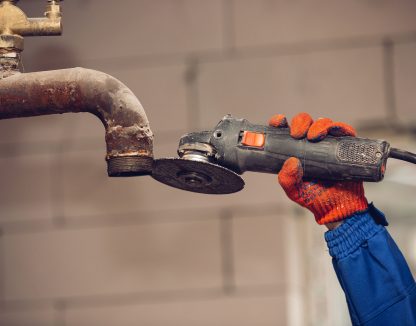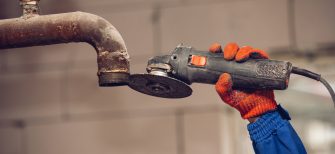What Is Plumbing Flat Rate Pricing?
Plumbing flat rate pricing charges customers a fixed price for a particular job or service. This means that the customer knows exactly how much they will be charged upfront, regardless of how long the job takes or what materials are used. The flat rate price is predetermined and based on a standard set of rates for different services, which are usually listed in a pricing book.
How Is Plumbing Flat Rate Pricing Different From Other Pricing Models?
Besides flat rate pricing, there are two other primary pricing models for plumbing; time and material and hourly rate. The time and material pricing model charges customers based on the amount of time spent on the job and the cost of materials used. This model can be problematic, as it can lead to unpredictable costs for both the customer and the business.
The hourly rate model charges customers based on the amount of time spent on the job, but doesn’t factor in the cost of materials used. Again, this can lead to unpredictable costs and ultimately an unsatisfied customer.
4 Benefits of Plumbing Flat Rate Pricing For Your Business
1. Simplify your plumbing pricing process
One of the primary benefits of plumbing flat rate pricing is that it simplifies the pricing process. Customers appreciate the transparency of knowing upfront what they will be charged for a particular service. It eliminates the need for customers to constantly watch the clock and worry about how long the job is taking. As a result, plumbing flat rate pricing can build trust and loyalty with customers, leading to repeat business and positive word-of-mouth referrals.
2. Increase your plumbing business profitability
Another benefit of plumbing flat rate pricing is that it can be more profitable for the business. With traditional pricing models like time and material, the customer’s final bill can be influenced by factors outside of the plumber’s control, such as a slow-running pipe or hard-to-find parts. With flat rate pricing, the business can factor in all potential labor costs and material prices upfront, ensuring that the price charged to the customer covers all costs and provides a profit margin.
3. Increase technician efficiency and administrative time
Flat rate pricing can also save time and be more efficient for the business. Traditional pricing models can be time-consuming, requiring the plumber to keep track of the time spent on the job and the materials used. This can be especially challenging for new or inexperienced plumbers. Flat rate pricing eliminates this challenge, allowing the plumber to focus solely on completing the job efficiently and effectively.
For customers who need multiple repairs or services, plumbing flat rate pricing can also be a cost-effective option. Since the flat rate price is determined upfront, customers can bundle services together and save money compared to paying an hourly rate for each service individually.
4. Plumbing flat rate pricing is easy to implement
Finally, plumbing flat rate pricing can be easily implemented using flat rate price books. These books contain a standard set of rates for different services, allowing plumbers to quickly and easily determine the flat rate price for a particular job. Flat rate books are often customized for the specific needs of a plumbing business, and can be updated as needed to reflect changing material prices or labor costs.
Plumbing flat rate pricing is a pricing model that offers numerous benefits for plumbing businesses. It simplifies the pricing process, builds trust and loyalty with customers, can be more profitable for the business, saves time and is more efficient, can be cost-effective for customers, and can be easily implemented using flat rate price books. By adopting plumbing flat rate pricing, your business can streamline its operations, improve customer satisfaction, and increase its bottom line
Seamlessly Implement a Custom Plumbing Flat Rate Pricebook For Your Business Today
Plumbing Flat Rate Pricing Frequently Asked Questions
How do you calculate flat rate pricing?
(Your Hourly Rate x Repair Time in Hours) + (Part Cost + (Part Cost x Part Mark-up)) = Repair Price
Calculating flat rate pricing involves determining a fixed price for a particular job or service. This price should include all potential labor costs and material prices, as well as a profit margin for the business.
To calculate flat rate pricing, a plumbing business will typically use a pricing book that lists a standard set of rates for different services. These rates are based on factors such as the complexity of the job, the required skill level, and the time and materials needed to complete the job.
What is an example of a flat rate pricing for plumbing?
Let’s say a customer calls a plumbing business to fix a leaky faucet. The plumber determines that the repair will require replacing a faulty valve and installing a new faucet. Using a flat rate pricing model, the plumbing business would quote the customer a fixed price for the entire job, regardless of how long it takes to complete or what materials are used. The price might be determined based on a standard set of rates for faucet repair, which are listed in the plumbing business’s pricing book.
For example, the plumbing business might charge a flat rate price of $250 for a faucet repair, which includes the cost of the new valve, the new faucet, any necessary fittings, and the labor required to complete the repair. The flat rate price is determined based on the time and materials required to complete the job, and the profit margin that the business wants to earn.







